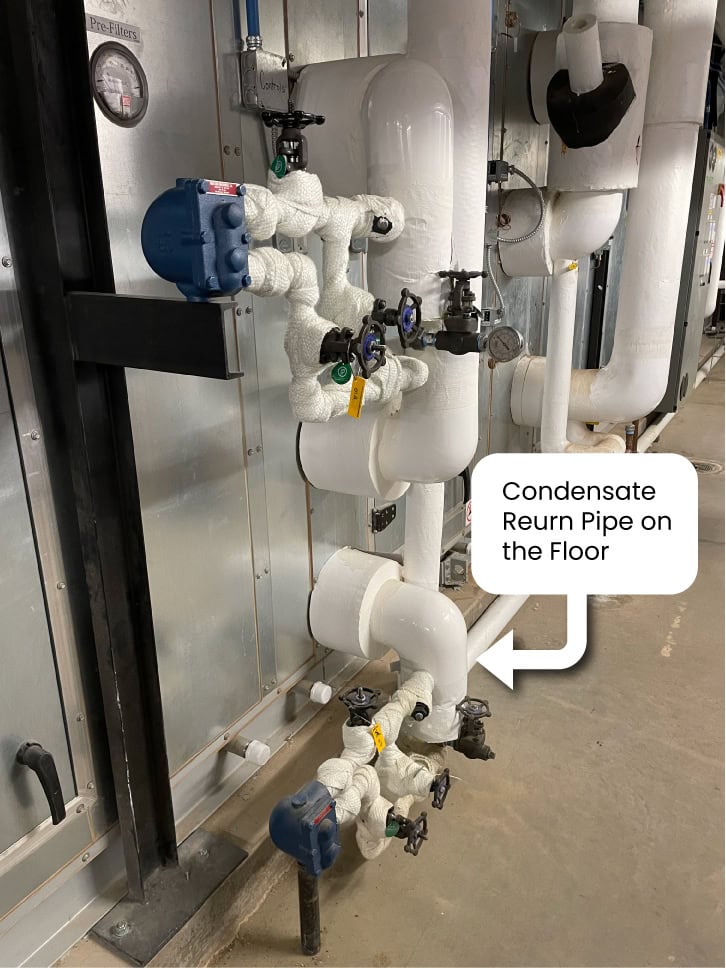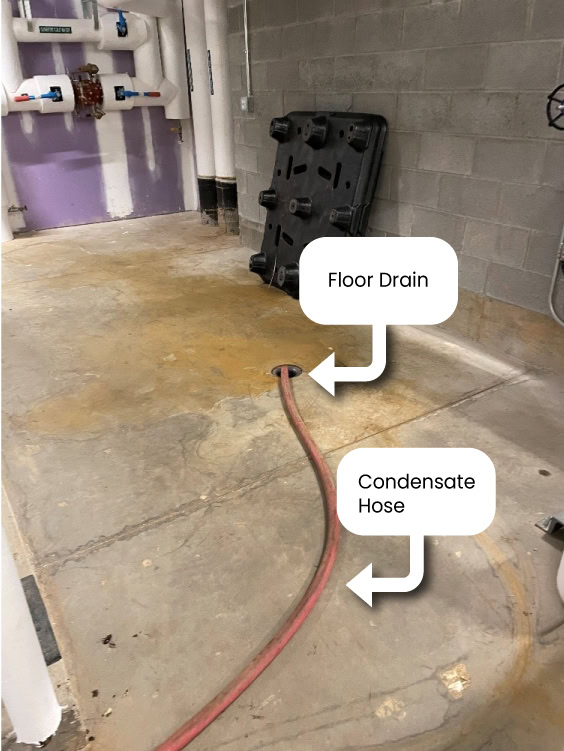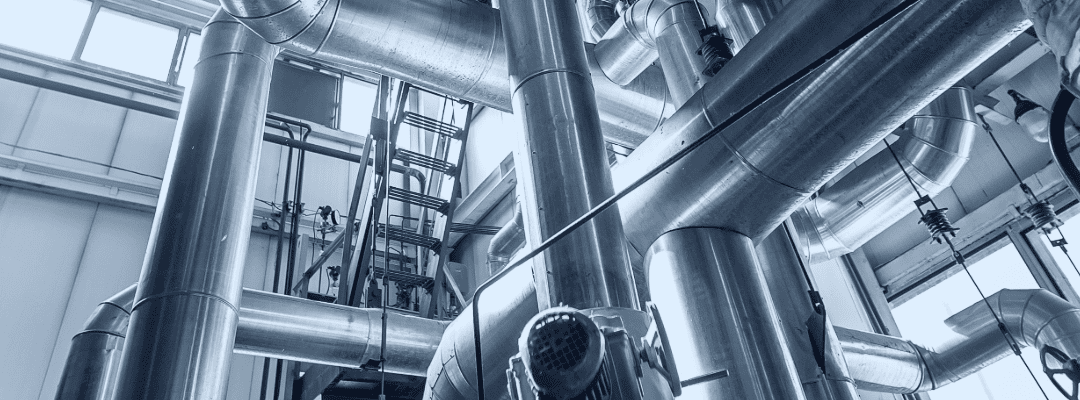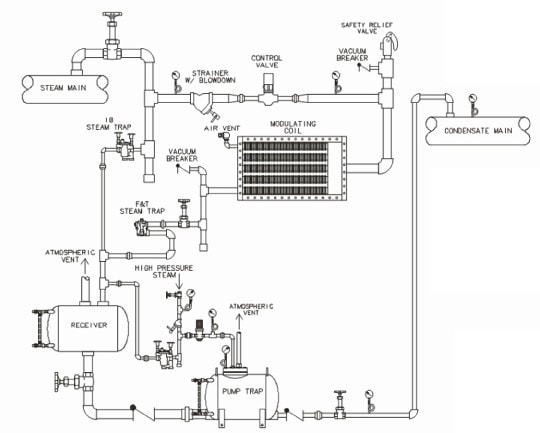Let’s be honest—condensate drainage isn’t usually the first thing on your mind when optimizing system efficiency. But overlooking it can cost you more than you might think. Improper design can lead to significant energy waste, increased maintenance costs, and potential safety hazards. To improve efficiency and reduce operational expenses, we’ll break down common design mistakes and simple ways to prevent wasted energy and money.
A well-designed condensate drainage system ensures that steam traps function correctly, allowing condensate to return efficiently to the boiler or utility plant. When improperly managed, condensate is often wasted, increasing water consumption, energy loss, and chemical treatment costs. By getting the design right, you can prevent these costly inefficiencies before they start.
Common Issues in Condensate Drainage Design
So, what are the biggest design pitfalls? Here are a few common issues that can cause major inefficiencies:
Pipe Sizing: If pipes are too small, they won’t be able to handle the volume of flash steam generated, leading to bottlenecks, pressure build-up and will reduce the efficiency of your entire steam system.
Vent Sizing: Undersized vents can trap flash steam, creating backpressure and excessive heat. This puts strain on steam traps and condensate return pumps, and disrupts drainage, and increases increasing the risk of system failure.
Lifting Condensate: When there’s not enough pressure to lift the condensate from the steam trap to an overhead pipe or to a receiver inlet, it can back up, flood the equipment and kill efficiency.
Pump Considerations: If the condensate return pump does not have enough pressure at its inlet (NPSH), condensate at elevated temperatures may flash and cause cavitation. This will damage the pump impeller and reduce efficiency and service life.
One of the most common—and costly—mistakes is lifting condensate into overhead pipes, especially when modulating steam control valves are involved. This single design flaw is behind many of the drainage issues we see in the field and can lead to serious, system-wide problems.
The Impact of Lifting Condensate to Overhead Return Lines
Heat exchangers with modulating steam control valves regulate steam flow based on temperature requirements. As steam demand decreases, condensation occurs rapidly, often creating a vacuum within the exchanger. If the outlet of the steam trap is connected to an elevated return line, the vertical lift presents a static head of water, creating backpressure.
For every 2.31 feet of lift, approximately 1 psi of backpressure is added. For example, a 6-foot lift generates around 2.6 psig of backpressure. If the initial steam pressure is already low, this backpressure can prevent condensate from exiting the exchanger, leading to system inefficiencies, flooding, and potential equipment failure.
Real-World Example: Issues with Vertical Condensate Return Lines
Before: The Inefficient Setup
In the example shown to the right, an Air Handling Unit (AHU) with two vertical steam coils drains condensate through Float and Thermostatic Steam Traps into a return line running along the floor.
This setup is pretty common, especially since most AHUs are installed directly on the floor or on a 4–6-inch housekeeping pad. But when steam coils are controlled by a modulating steam valve, the pressure inside the coil can vary. That’s why it’s important to install vacuum breakers and air vents—to help the condensate drain properly by gravity, no matter the load conditions.

However, the original design included a condensate return pump connected to an elevated atmospheric receiver. This meant the condensate had to be lifted 6 to 7 feet to reach the receiver. Under low load conditions—or when the AHU isn’t running—there often isn’t enough pressure to push the condensate up into the receiver. As a result, condensate backs up in the coil, causing stalling, poor system performance, and in some cases, frozen or corroded coils.
In some setups, if the return lines are low enough, you can use a low-profile centrifugal pump with a very low NPSHr (Net Positive Suction Head required). But in this case, there wasn’t enough clearance for that type of pump—unless the facility opted to dig a pit and lower the pump beneath floor level.

After: A Costly Workaround
When the system experienced constant backups, the return line was cut and replaced with a hose, bypassing the vertical lift entirely. This quick fix led to wasted energy, lost condensate, and long-term system inefficiencies. Instead of being recovered, hot condensate was dumped, increasing energy costs and putting strain on the Central Utility Plant. Worse, condensate above 140°F can damage piping and disrupt water treatment operations—creating even bigger headaches down the line.

The Fix
Want to avoid these costly inefficiencies? The four main things you should focus on are:
Prioritize Gravity Drainage: Whenever possible, design systems to use gravity instead of lifting condensate. It’s the simplest way to prevent backpressure and inefficiencies.
Install Vacuum Breakers: These allow air entry, preventing vacuum lock and keeping heat exchangers running smoothly.
Size Pipes & Vents Correctly: Proper sizing prevents excessive backpressure, reducing wear and tear on your system.
Use Closed-Loop Systems: Recover and reuse condensate to cut energy costs and improve sustainability.
Vertical condensate return lines should be avoided when draining heat exchangers with modulating steam control. By designing systems that prioritize gravity drainage and proper venting, you can significantly reduce energy waste and operational costs.
Stop wasting energy—and money. If your system is struggling with condensate drainage, we can help. Contact us today to optimize your steam system and cut operating costs.
About Dennis Kacsur | Technical Training Manager at Merlo Energy
Dennis Kacsur is currently Technical Training Manager for Merlo Energy. Over the last 28+ years, he has worked in various technical sales, marketing, and training positions with several steam specialty equipment manufacturers and sales organizations. During that span he has also helped facilities over a wide spectrum of industries as well as contractors and engineers to design, improve, and maintain their steam and condensate systems. Originally from Allentown, PA, Dennis has a BS in Mechanical Engineering from Penn State and an MBA from DeSales University.
Webinar - Importance of Condensate Drainage for Maximizing Efficiency
Explore the key strategies, equipment and maintence practices for efficient condensate removal.
Webinar - Troubleshooting & Optimizing Condensate Drainage Systems
Discover practical strategies, essential equipment, and maintenance practices that enhance reliability and prevent costly drainage issues.


